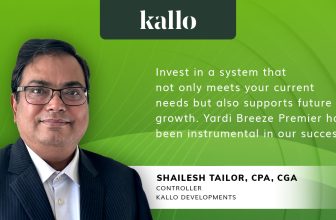

This mini-reviewer answers most of the questions that come to mind about what the Senior High School (SHS) curriculum entails. To refresh your memory, answers from research conducted by the Gold Star Daily, along with quotes from personal interviews with Cagayan de Oro National High School – SHS principal Jerson B. Herrero, and Dr. January Gay Valenzona, SHS coordinator for class program of the Department of Education (DepEd) Cagayan de Oro Division, are curated to outline the necessary information about Grades 11 and 12. This also includes the Philippine laws and policies that cover and provide guidelines for the implementation of this educational program.
Question: What is Senior High School (SHS) in the Philippines?
Answer: Senior High School refers to Grades 11 and 12 in the Philippine basic education system. It was added as part of the K–12 reform to give students more time to acquire skills, prepare for work, higher education, or entrepreneurship, and align Philippine education with international standards. (Republic Act 10533)

Q: When did the SHS program start in the Philippines?
A: The K–12 reform, which includes SHS, began with the filing of the Omnibus Education Reform Act in May 2008. The K–12 curriculum took effect in April 2012 for basic education. The SHS program (Grades 11–12) was officially introduced nationwide in June 2016. The first batch of students to complete SHS graduated in 2018.
Q: How did the SHS program start, or how was it legislated?
A: The key law was the Enhanced Basic Education Act of 2013 (Republic Act 10533), which institutionalized the K–12 program and mandated the addition of Grades 11 and 12. This law allowed the Department of Education (DepEd) to design the SHS curriculum with “specialized tracks,” so students could choose different pathways (academic, technical-vocational, or arts). The reform was also motivated by a desire to “strengthen secondary education” and better prepare students for various post-high-school options.

Q: What does the original (pre-strengthened) SHS curriculum look like, or what were its features?
A: Under the original SHS program (K–12 implementation), students chose among tracks (academic, technical-vocational, arts, sports) and strands such as Science, Technology, Engineering, and Mathematics or STEM, Accountancy, Business and Management or ABM, and Humanities and Social Sciences or HUMSS within those tracks. There was a “core curriculum” plus specialized subjects based on the student’s chosen strand. SHS also included a work immersion component (on-the-job exposure) to help students gain practical experience.
Q: What is the “Strengthened SHS Curriculum”?
A: In 2025, DepEd launched a pilot program, “strengthened SHS curriculum,” in around 800 schools in the country. Dr. January Gay Valenzona, SHS coordinator for class program of DepEd Cagayan de Oro Division, said that this is in reference to the DepEd Memorandum No. 45, series 2025.
The reform’s objective is to decongest the curriculum, making it more focused, and to reduce overload.
Under the strengthened curriculum, there are only two main tracks: Academic and TechPro (technical-professional). The old strands (like STEM, ABM, HUMSS) are reorganized under these broader tracks.
The number of core subjects is significantly reduced: from approximately 15 in the old setup to just 5 core subjects in Grade 11, which will be offered for one school year.

These five new core subjects are:
- Effective Communication
Life Skills
General Mathematics
General Science
Pag-aaral ng Kasaysayan at Lipunang Pilipino (Study of History and Philippine Society)
Elective subjects are now clustered, and students can pick electives across clusters, not strictly limited by “strand”, giving more flexibility.
The immersion or field exposure component is extended: under the new curriculum, immersion spans the entire second semester of Grade 12, ensuring a more meaningful experience. Cagayan de Oro National High School – SHS principal Jerson B. Herrero said that this is one of the major changes in the restructured curriculum.
Work immersion hours also increase, which nearly doubles from an earlier total of 340 hours to 640 hours under the revised curriculum.
The goal is to foster more “practical competencies,” job-ready skills, including critical thinking, effective communication, and better alignment with job markets or further education.
Disclaimer
Mindanao Gold Star Daily holds the copyrights of all articles and photos in perpetuity. Any unauthorized reproduction in any platform, electronic and hardcopy, shall be liable for copyright infringement under the Intellectual Property Rights Law of the Philippines.







